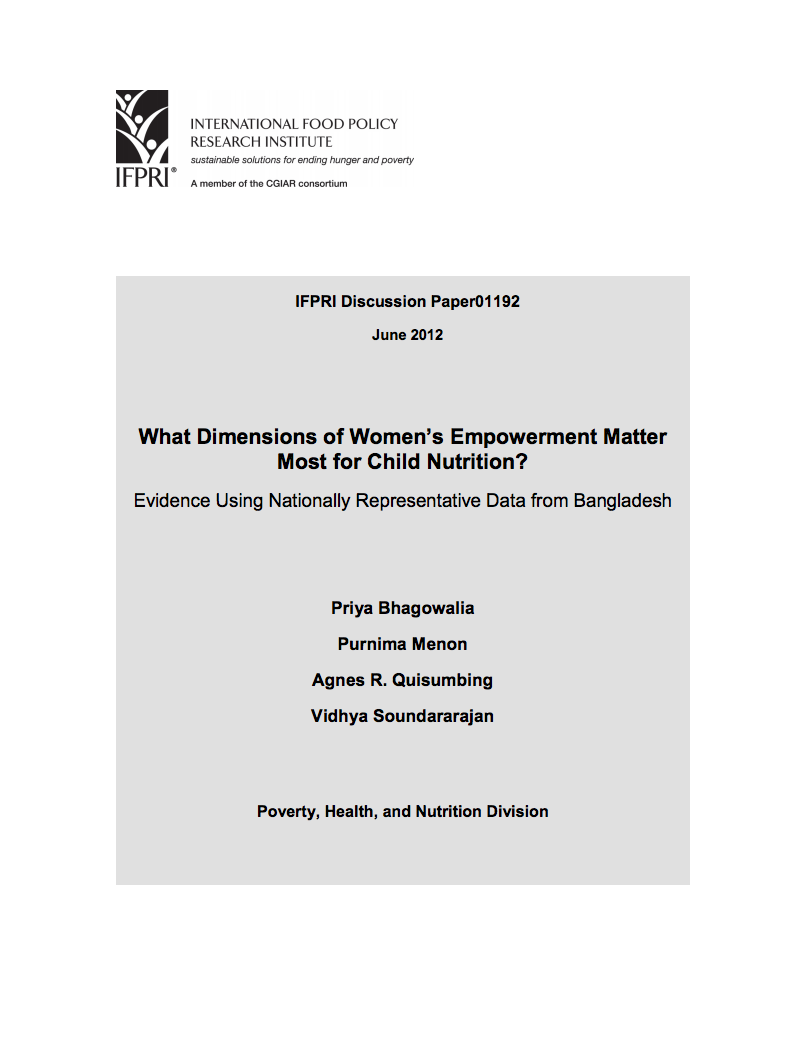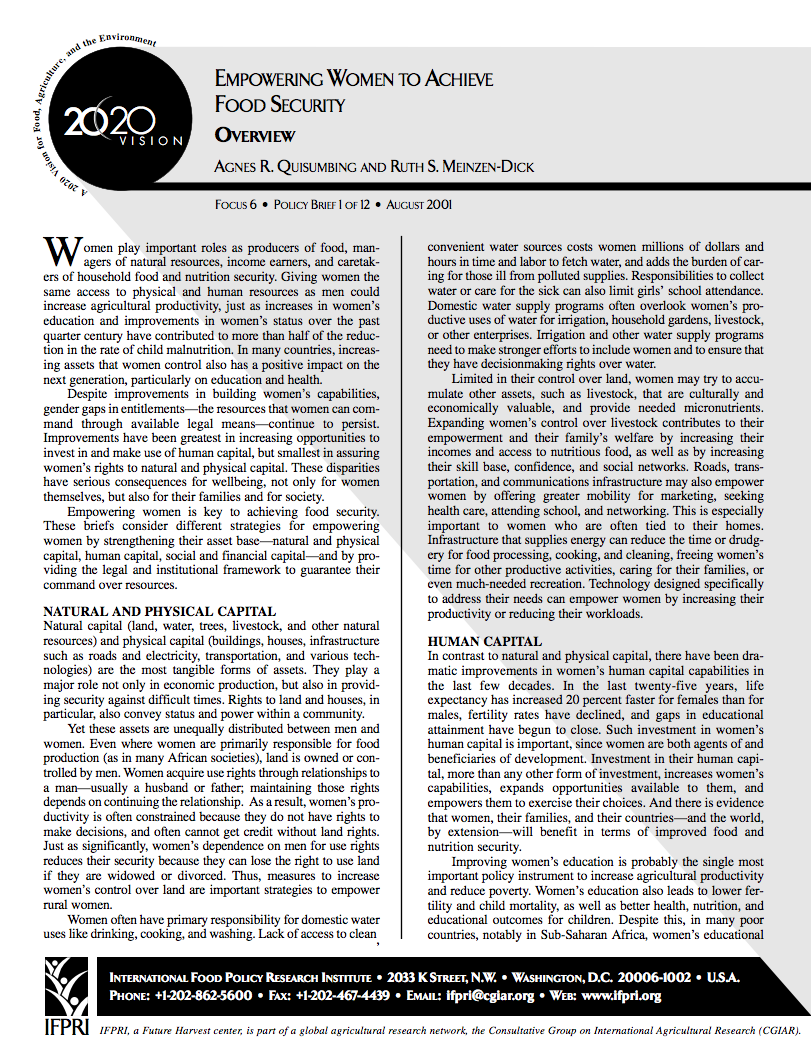The Effects of Intrahousehold Property Ownership on Expenditure Patterns in Ghana
Increasingly, economists are examining how the dynamics within households affect the outcomes of household decisions. This paper uses data from the 1991/92 and the 1998/99 Ghana Living Standards Surveys to examine how the share of assets owned by women in Ghanaian households affects household expenditure patterns. In this analysis, assets include business assets, savings, and farmland. The results indicate that women’s share of assets do have an impact on household budget shares for a number of expenditure categories in each time period.









